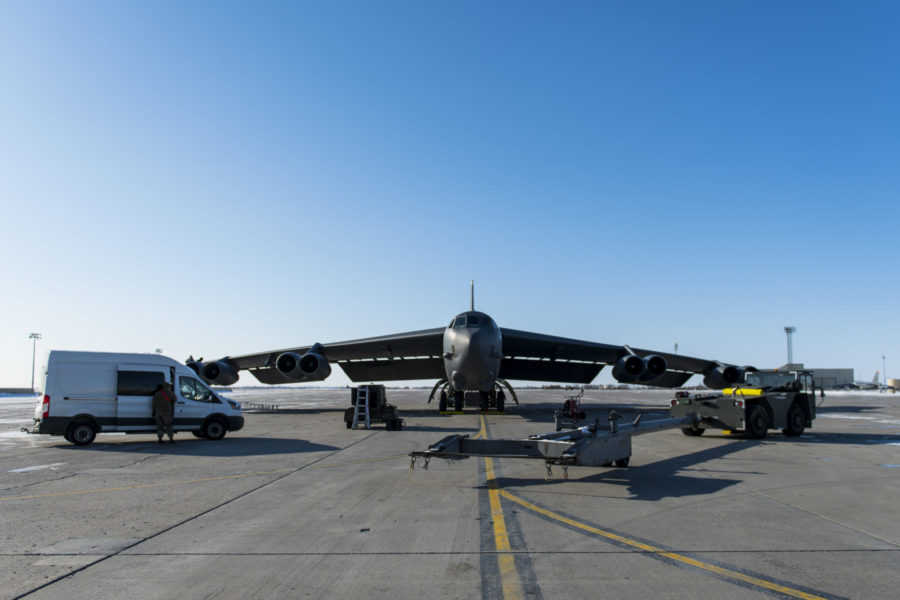The cost of the B-52 re-engining program has increased 50 percent because of integration issues, according to revelations in a House Armed Services panel hearing.
Air Force acquisition executive Andrew P. Hunter acknowledged the B-52 Commercial Engine Replacement Program (CERP) price hike as voiced in a question from Rep. Rob Wittman (R-Va.) in testimony on service modernization.
“We currently believe there is cost growth from our design work that we did originally through the middle-tier acquisition program to what we anticipate we’ll be looking at [in] Milestone B,” which evaluates readiness for entry into the engineering and manufacturing development phase, Hunter said.
The B-52 CERP has been conducted as a middle-tier acquisition program to get underway rapidly and develop a prototype system but is now moving to a “traditional” program, and the Air Force is firming up the costs it expects to pay, Hunter said. The cost increases have more to do with integrating the engines on the B-52, which is a Boeing effort, and has less to do with the engines themselves, which will be built by Rolls-Royce, he added.
“I want to emphasize that a lot of that engineering work is actually inside the airplane, on the support struts, to which the engines attach, versus the engine itself, which is largely a commercial engine that already exists,” Hunter said. The engine needs only “a modest number of modifications,” he said.
“So it’s really about re-engineering 1960s aircraft to perform all the way through” to the end of the B-52’s lifetime, now envisioned as circa 2050.
The Air Force told Congress a year ago that the CERP effort had increased in cost by nine percent because of pandemic-related supply issues, to about $11 billion. Hunter did not speculate on a new cost estimate.
The end of the risk reduction and prototyping phase is rapidly approaching, Hunter said, and when it’s done, “we’ll have an effective design … [that will] allow us to go into an acquisition program to allow us to do that re-engining.”
At Milestone B, “we will … have in our hands the real, full cost of what it will take to do it, and we’ll set the original baseline for the full program … at that point,” Hunter said.
The Air Force will “assess” at that milestone whether “it still make sense to move forward with that program,” Hunter said, adding, however, that “we will need a new engine for the B-52 to get it out to its full lifetime.”
In an email response to a query from Air Force magazine, Boeing said the “50 percent differential in the CERP cost comes from an original, 2017 government estimate produced by the Air Force program office, compared to the latest 2022 estimate.”
The company said it “is our understanding that the government’s estimate has been adjusted over the years from the initial business case analysis, developed at a very early phase of the acquisition, to incorporate additional complexity” as well as “further historical fidelity on similar programs, as well as additional understanding of technical scope and complexity of the design.”
Rolls-Royce North America said through a spokesperson that the company “has been collaborating closely with the Air Force and program integrator Boeing on the CERP program.” There have been “no changes in engine pricing since the contract was awarded.”
The Air Force was not able to comment on the B-52 CERP cost increase by press time.
The CERP seeks to integrate eight new Rolls-Royce F130 engines per aircraft to replace the Pratt & Whitney TF33s, which are original equipment on the B-52Hs, built in 1962. The engines will be digitally controlled, requiring new pylons, new twin-engine nacelles, and wiring to connect the powerplants to the B-52 cockpit. The project is part of an overall modernization of the B-52 fleet that includes digital wiring, new communications, and a new radar, among other improvements.
